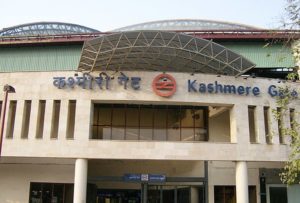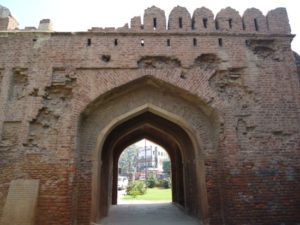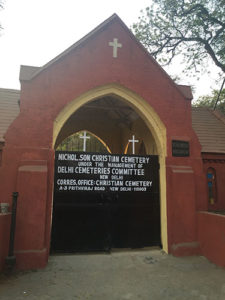How Kashmere Gate Metro Station got its name?

Located on the Red, Yellow and Violet Lines of the Delhi Metro, Kashmere Gate is a transfer station between the Red Line on the highest upper level, the Yellow Line on the lowest underground level and Violet Line on the parallel underground level. Named Kashmere Gate Metro Station on December 25, 2002, it is the busiest metro station in India and is the largest metro station within the Delhi Metro spread over 118,400 sq ft and the only three-line interchange metro station in India. The station has six floors and facilities like restaurants, fast food centres, McDonald’s, Burger King, water vending machines, three toilet complexes, over 35 escalators and ticket vending machines.
Under the Delhi Metro Phase III plan, the Violet Line was extended from its current terminus to meet the Yellow and Red Lines at Kashmere Gate station. This will provide an alternative route between Central Secretariat and Kashmere Gate, alleviating crowds on the heavily used Yellow Line.
Kashmere Gate is one of the original gates of Shahjahanabad, the city built by Mughal emperor Shah Jahan in 17th century. It was so called because the road from it led to Kashmir. It was through this gate that the British troops entered Delhi in 1857. During the First War of Indian Independence, the city was captured by the Indian forces which controlled the city for around four months. In September 1857, the British forces blew up the gate using gunpowder, entered the city and defeated the Indian forces.
A few metres from the Kashmere Gate Metro Station is Nicholson Cemetery, dedicated to British Brigadier General John Nicholson who died fighting the Indian soldiers during the First War of Indian Independence. Another landmark in the area is the St James’ Church which was built in 1836 by Anglo-Indian military adventurer James Skinner. It is one of the oldest churches in Delhi.
At a short distance away are the remnants of Dara Shikoh Library. This used to be the old campus of Guru Gobind Singh Indraprastha University. According to INTACH, “the Dara Shikoh library building was once part of the estate of Dara Shikoh, the eldest son of Shahjahan. In the early 19th century, it became the Residency for the British Resident and from 1844-1857, it housed the Delhi College of Engineering.”
Before the St Stephen’s College moved to Delhi University’s North Campus, it was housed here and was founded in 1881 by the Cambridge Mission. It now has the office of the Election Commission.





